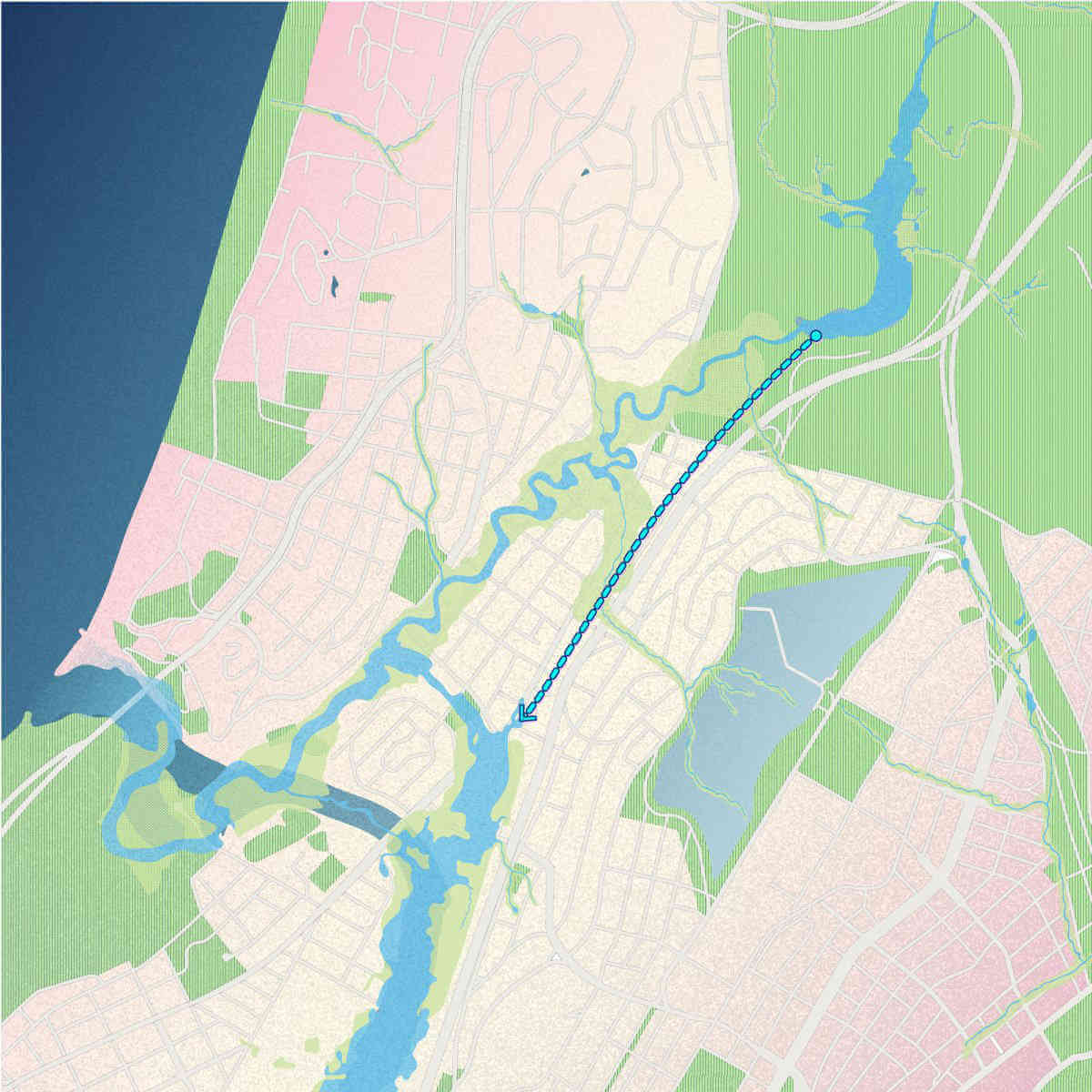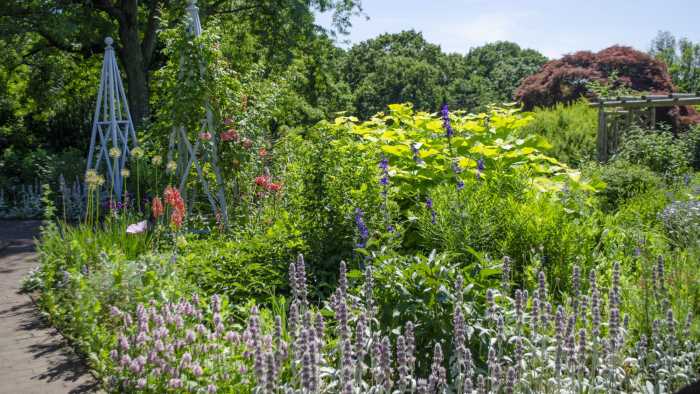Bronxites would love to see the long awaited ‘day lighting’ green space conversion of Tibbetts Brook for more reasons than just a bike trail.
The environmental project is expected to reduce flooding along the borough’s northwestern corridor in addition to offering a plethora of ecological benefits for Van Courtlandt Park.
In an effort to showcase the positives from the day lighting project, the Friends of Van Courtlandt Park teamed up with environmental architects Amanda Schachter and Alexander Levi to create a miniature, ‘mobile wetland’ that traveled around the area to demonstrate what natural benefits could be in the offering.
Titled ‘Finding Tibbetts 2.0’, the mobile wetland was built atop an 8-foot-by-16-foot trailer bed holding live marshland grasses growing up through floating geotextile pads, extending into a river-bed reservoir with clear sides to reveal the underwater roots.
Across the front trailer edge flew a miniature portion of the Major Deegan Expressway; a slick, shiny elevated black surface of dashed lane lines, barriers, and light poles, with bright drain spouts shedding runoff onto the marsh below.
The scientific expose was connected via a series of looped, water-filled clear vinyl tubes that could handle a bumpy commute between Bronx neighborhoods.
In addition to its ‘selfie box’ that allowed visitors to get their hands and feet wet while wading in the pseudo-marshland, it also provided a rich amount of environmental insight to the hopeful green way to be.
The micro-ecosystem on wheels ventured around the Bronx from summer to late fall making stops in Van Courtlandt, Kingsbridge, and Manhattan’s Marble Hill.
Marble Hill was built on swampland and is subject to major flooding along Broadway according to ecologist, John Butler who is working with the Friends of VCP on the project.
“If the greenway is created, then flooding on Broadway would likely see a major reduction,” Butler said standing next to Broadway and W. 242nd Street.
Schachter then explained how the Westchester sourced waterway has been flowing beneath Broadway in an enclosed sewer channel since 1912, eventually dumping out near Wards Island.
“Now it could flow freely and above ground from Van Cortlandt Lake to the Harlem River along the Old Putnam Railroad right-of-way alongside the Major Deegan Expressway,” Schachter said.
Essentially, in addition to opening up the desired green space, the day lighting project would also create a shortcut for the waterway to openly flow into the Harlem River above ground, alleviating pollution and flooding according to both Schachter and Butler.
The Putnam Right-of-Way, named for the old rail line that this strip of land once served, is a low-line parcel of land that Tibbets Brook runs through.
The property that would be effected is privately owned by CSX Transportation, a railroad freight logistics company that has not used the land since the 1980s.
It has also been a target of acquisition from many New York officials, all the way up to U.S. Senator Schumer.
According to the Schumer, CSX was given a very generous offer from the city to purchase the land for the desired green way.
In efforts to get the ball rolling, he held a press conference on the West 233rd Street overpass of the Major Deegan Expressway on Thursday, October 18 where many Bronx officials including Borough Presidnt Ruben Diaz, Jr.spoke in support of the project.






















